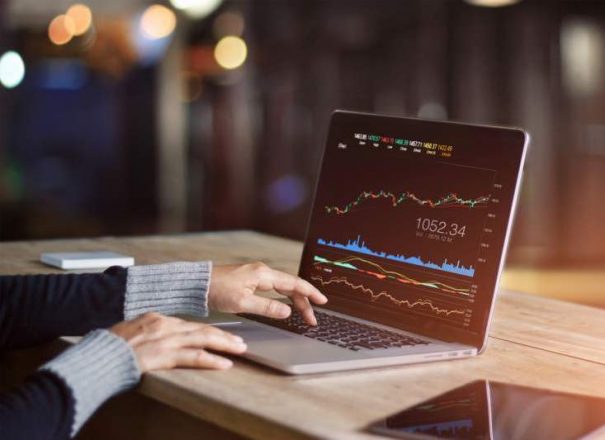We face risk every day. We place our lives at risk when we race down the highway in a thin metal box doing 80 mph or when we squeeze onto an overcrowded subway train controlled by an overworked and stressed-out driver. We’re only mindful of this abstract risk of serious injury or death on a sub-conscious level. Better we don’t overthink it. We leave that to our insurance companies.
But when it comes to our businesses, investments, and retirement savings, not to mention our families and livelihoods, risk takes on a whole new meaning — one that’s very real and top-of-mind.
The risk of losing one’s money is at the heart and soul of investing and building wealth. And perhaps leaving a legacy, if you’re so fortunate. Without risk, there’s really no reward, and taking on more risk can lead to even bigger rewards. Or so the old adage goes. Ideally, every investor should strive to earn the highest return possible with the least amount of risk.
What Is Investment Risk and How Does It Work?
Investment risk — whether it involves a savings account, stocks and bonds, real estate, or a startup enterprise — reflects both the loss potential and the uncertainty that you may lose money. That’s why investors demand higher returns to compensate themselves for being bolder risk-takers. This is called the risk-return tradeoff.
But there are other factors at play that can influence the risk-return dynamic of a particular investment. Some investors want flexibility, or they need the authority to withdrawal their money immediately.
Some folks require specific timelines on how fast their money should grow. Other investors need reassurances their money is safe.
The concept of risk can take on many dimensions. Each savings and investment product produces different rates of risk and returns — sometimes with big differences.
Low-Risk Investing
Many investors are timid and risk-averse, seeking safety over returns. For example, a popular and safe savings product they may choose is a federally insured certificate of deposit (CD) in which you lock away your money for months or years earning a fixed interest rate you think will stay ahead of the inflation rate. At the end of your maturity term, which can range from six months to six years, you’ll walk away with both your principal and earned interest.
CDs are as risk-free as you can get, in exchange for a low return (best rate now 1.56 percent). Every CD and bank savings account is insured by the Federal Deposit Insurance Corporation (FDIC) up to $250,000 per account owner, not per account. Credit union deposits also are insured by the government.
Another popular low-return, low-risk investment is the U.S. Treasury bond, or Uncle Sam’s debt. Treasuries aren’t insured, but they offer higher interest yields than CDs, reflecting the fact they’re riskier.
Bond investors who want higher returns can purchase corporate bonds. The risk-reward tradeoff: Investors face a greater risk because companies can easily default (unlike the federal government).
High-Risk Investing
On the other end is the risk-taker who can tolerate the inherent stress (risk tolerance) that comes with placing a lot of money on the line. This investor decides that she wants to plow her cash into a hot startup company with a promising future.
She could buy shares or make a direct investment in the company. Trouble is, the company doesn’t make any money. This investor is taking a lot of risk. The government doesn’t insure her investment against losses. If the company becomes profitable, this investor and others who stuck with their bets will typically reap huge returns in the end.
Then there are those investors who want to make a quick profit. They’ll purchase the latest initial public offering (or IPO — when a company starts sell stock to the public) in hopes that a massive hysteria of buying will send the stock price to Mars.
Sadly, many IPO investors, usually little guys, get burned badly. Look at all the sad sacks who enthusiastically gobbled up shares of Uber’s IPO only to end up losing a collective $655 million in the first week! Call it the risky bet from hell.
The Technicalities of Investment Risk
When investing in various asset classes like stocks, bonds, real estate investment trust (REITs), and commodities (cows and corn), investors need to be mindful of two different forms of risks: market risk (also called systemic risk) and specific risk.
Market risk is the big daddy of risk because it’s influenced by geopolitical events like Trump’s insane tariff war with China and interest-rate hikes (or cuts) by the Federal Reserve, among a hundred other macroeconomic factors.
Investors should mind specific risk when making a calculated, strategic bet on a single industry or company.
5 Types of Investment Risk
1. Business Risk
When you buy stock, you’re buying ownership in the company. With bonds, you’re purchasing the company’s debt in the form of a loan to the company. But companies go bankrupt all the time, and before they do, many tend to offer higher interest rates on their bonds (a clear sign of distress).
Keep in mind that if a company goes belly up and its assets sold-off, stockholders are the last in line to get back any remaining money — if at all. Bondholders, however, come first in the credit line.
2. Inflation Risk
We all know inflation is the great wealth destroyer as prices rise and our purchasing power falls. For investors in bonds or CDs with fixed interest rates, inflation is truly the devil. Imagine being stuck in a five-year CD yielding 2.5 percent annually when the rate of inflation is running at 3.5 percent. You’ve already lost.
3. Interest-Rate Risk
The rise and fall of interest rates can affect a bond’s face value. Typically, when rates rise, bond prices fall. And investors who sell their bonds before maturity when prices are falling could end up losing money.
4. Liquidity Risk
Smart investors always ask themselves, “How quickly can I eject from an investment gone bad?”
Every investor needs an escape hatch.
It’s easy to buy and sell stocks or bonds and run away. You can’t easily pull the ejection chord with real estate and more sophisticated investments like hedge funds. This type of risk also is about finding buyers and sellers in the market — if you can find any at all — when you need them most.
5. Volatility Risk
When stock prices go on a gut-wrenching rollercoaster ride, that’s volatility. Price fluctuations are unpredictable and pretty much uncontrollable.
Sometimes prices fall and rise along with the broader markets based on Trump’s latest tweets. Yet in most cases, a stock’s price is affected by the company itself, thanks to mismanagement, fraud, or a faulty product. Or sex.
Price volatility can scare off investors, but the smart, calm ones know how to exploit it. They buy when good stocks swoon. This is called buying the dips.
Final Thoughts: Life Is Just One Big Risk
Risk is what makes the world go around. If the first humans were too afraid to leave their caves, we wouldn’t be here. Without taking risks, we remain static.
Whether we’re investing or just living, we take risks to be rewarded, and when that happens, we grow and move forward to something even better.




